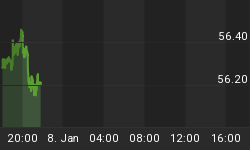The phase change happened almost imperceptibly. One month we're shedding jobs and agonizing over a long list of insolvent European countries and US states -- and the next month we're back in a bubble. U.S. employment has stopped shrinking and started growing. Iron ore is up 170% in the past year and oil is flirting with $85 a barrel. Hot money is back to chasing emerging market securities and junk bonds. Stocks, as a result of all this, are up pretty much everywhere and the media is full of stories declaring the Great Recession over and "normal" times just around the corner.
Score Round One for the unlimited printing press. Flooding the world with new fiat currency stopped the implosion, and it only took as long as it did because traumatized banks and hedge funds needed some time to recover from their near-death experience. But eventually they did recover, because that's the nature of free money. Sooner or later someone uses it for something and turns a profit and then, terrified of being left out, everyone else joins in and the game begins again.
Now the question is whether this baby bubble (let's call it the government debt bubble) will grow to the stature of its tech stock and housing siblings. In its favor is the fact that only a small fraction of the new reserves created by central banks have so far been put to work; when the rest hit the world's financial bloodstream, picture Uma Thurman after John Travolta stabs her in the chest with the adrenalin needle in Pulp Fiction.
On the other hand, the bond markets seem to be figuring out that they're the patsy in this scenario. The yield on 30-year US Treasuries has been creeping up for a while, and interest rates jumped across the board on Friday, when the U.S. reported those nice employment numbers.

Since variable rate paper ranging from Prime+ loans to option ARMs are linked to Treasury yields, a spike in interest rates would choke off the bubble and send us back to 2008. And since the US, always one to choose the dumbest, riskiest alternative, has financed itself primarily with short-term paper, every Treasury auction from here on out is a potential black swan. The table below is from an October New York Times article. It's a safe bet that the numbers have gotten even bigger in the ensuing six months:

And here's next week's Treasury auction schedule:
Monday: $28 billion in three-month bills and $29 billion in six month bills, $8 billion in 10-year TIPS.
Tuesday: $26 billion in one-year bills, $40 billion in three year notes.
Wednesday: $21 billion in 10-year notes.
Thursday: $13 billion in 30-year bonds.
As you can see, the US is dumping what used to be a year's worth of debt onto the market in four days. And because so much existing debt has to be rolled over continuously, we'll do the same every week for, apparently, the rest of our lives. I'll go out on a limb and give Round Two to the bond market.
















